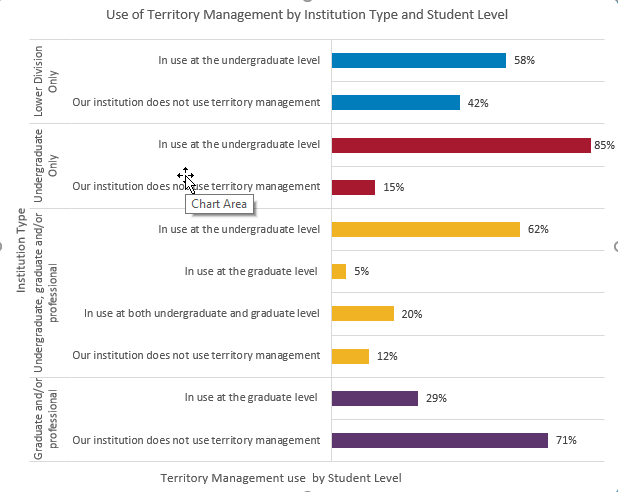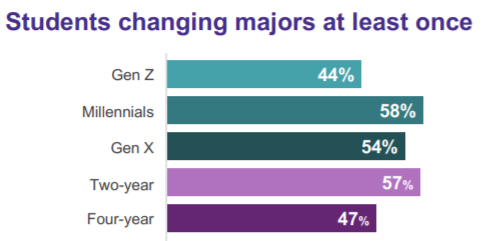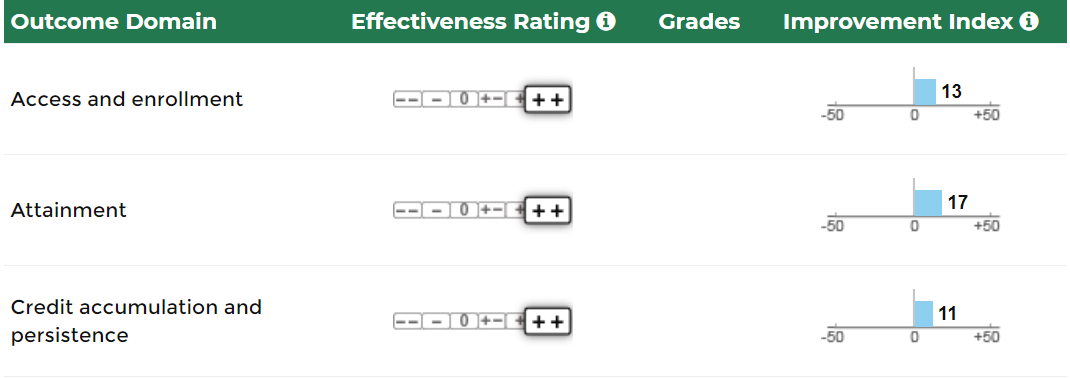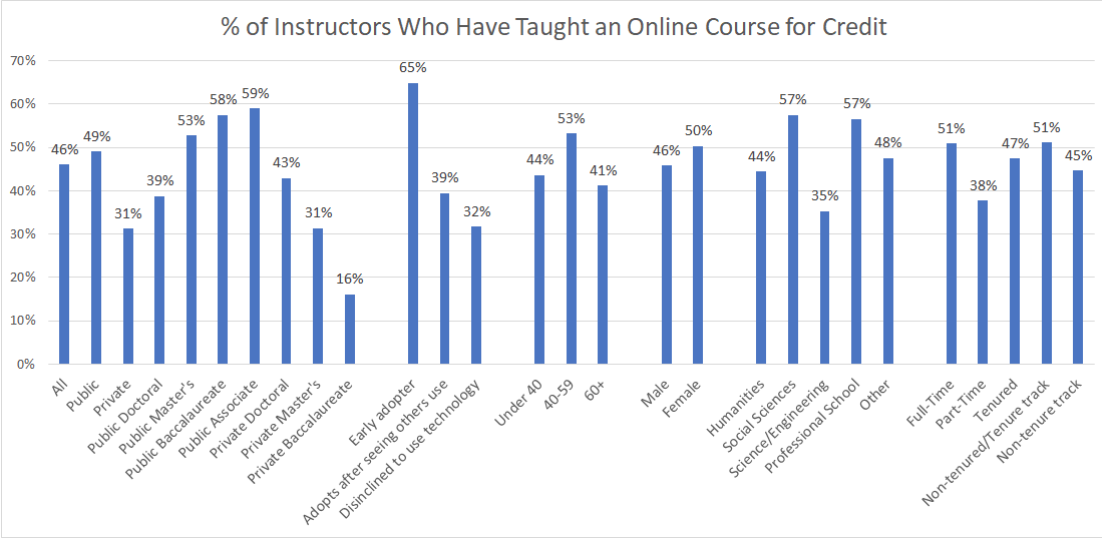Commentary
November 2019 has been a very busy month for the release of higher education related research. There are more than a dozen research summaries and links this month. Subjects range from international student enrollment and prospective student information source preferences to a decline in the value of a degree and the impact of adaptive software on college algebra completion.
AACRAO Research Update
Academic Records and Transcript Practice Report
The 2019 ARTG report is now available on the AACRAO website.
November 2019 60-Second Survey
The November 2019 60-Second Survey inquired about the use of territory management for undergraduate and graduate students. For the purpose of this survey, territory management was defined as: “Territory management is the assignment of an admissions representative to a population of targeted students. Territory managers employ strategies and tactics for the purpose of facilitating students through the enrollment funnel and, in the end, meeting institutional enrollment goals.” In the aggregate, 79% of institutions surveyed use territory management for undergraduate students, graduate students or both populations.
The full report can be accessed here.

In-Progress and Near Future AACRAO Research
We have begun a sponsored project on institutional change management and technology change management with Ellucian, which will conclude by the annual conference
The prior learning assessment (PLA) report and data have been selected as a joint WICHE/AACRAO session for the annual conference
Parts of the report will be included in the academic records and transcript guidebook
WICHE has expanded its contract work with AACRAO on PLA to include a student survey and report
ACE has invited AACRAO to write a primer on the technology used for transfer credit. This primer will be used to inform members of the ACE task force on transfer credit
The January 2020 60-Second survey topic will ask members about their enrollment management research interests
The Chief Enrollment Management Officer career profile series will deploy the next survey in early spring 2020
Current Higher Education Research and Related Topics
Funding Cuts Perpetuate Inequity
A Center on Budget Policy Priorities (CBPP) report notes that per-student state funding fell 13% from 2008 to 2018, and tuition rose by 37% nationally. The CBPP authors recommend that lawmakers make efforts to enhance need-based aid and increase funding for higher education.
Higher Education Leaders’ Perspectives on Higher Education Change and Disruption
ACE surveyed 495 leaders about how they are planning for market trends including decreases in funding, loss of student population, increased diversity in the student population and increased competition. The authors also interviewed some participants on innovation in higher education. Conclusions include:
Few are highly confident in their institution’s level of preparation for changing market forces
There is more confidence among leaders at institutions with longer planning horizons
Less than 20% plan 10 years out or more
1,000 Student Survey
A survey of 1,000 U.S. students sought opinions and feelings about their experiences with selecting majors and courses.

Impact of changing majors included increased time to degree, increased cost and need to take additional courses
Students seek help from advisors on a number of topics including:
Decline in the Return to a Degree
The University of Warwick and the Higher Education Statistics Agency examined data for two birth cohorts (1989/1990 and 1970), comparing labor force data when both cohorts were 25/26 years old. Although the results were not controlled for ability, the researchers found:
The return to degree value has fallen by 11%
The decrease is a recent development
They are unable to conclude whether this is a short-term decline or the beginning of a longer-term decline.
U.S. Graduate Student Study Abroad Experiences and Participation
IIE researchers completed a graduate learning overseas project. This is a first-of-its-kind study which aimed to “identify the scale and scope of U.S. graduate students’ education activities and to better understand the institutional practices around student mobility data collection.” Findings include:
3.4% participated in study abroad in the 2016/2017 timeframe, and 70% did so without it being a requirement of the program
The engagements are often short term
Business students are more likely to participate than students majoring in other fields
Institutions tend to rely on students’ self-reported participation data
Adaptive Courseware Impact on Algebra
Inside Higher Ed reported on Arizona State University’s (ASU) experience with the ALEKS adaptive courseware for algebra classes. ASU is finding success. In 2015, the percent of students who achieved a C or higher in College Algebra was 57%; it is now 79%.
Highest Long-term Value from Private Nonprofit Colleges
Georgetown University’s Center on Education and the Workforce (CEW) report ranking the return on investment has been summarized by Education Dive.
Two What Works Clearinghouse (WWC) Evidence Snapshots
Accelerated Study in Associate Programs (ASAP) Review
The What Works Clearinghouse (WWC) released an evidence snapshot on the ASAP program. This three-year program aims to remove barriers to success and completion. It requires students to enroll full time and take required developmental education courses in the first semester. The WWC found that this program has a positive effect on outcomes (see figure from the snapshot below).

InsideTrack Coaching
WWC found evidence that InsideTrack Coaching is associated with potentially positive outcomes for credit accumulation and persistence.
Fall 2019 International Student Enrollment Snapshot
IIE just released its fall 2019 snapshot report. This fall, U.S. institutions saw a decline identical to that in 2018 (0.9%) in first-time international student enrollment. Doctoral institutions reported an increase, and Midwest master’s institutions reported a decrease. Total enrollment also decreased by 1.6%. Institutions remain concerned about attracting international students.
Rural vs. Nonrural Postsecondary Outcome Differences
An article in the American Journal of Education examines the differences in postsecondary participation, influences and outcome over time. The researchers examined Educational Longitudinal Study data from 2002-2012 and compared their results to earlier studies and found the following:
Rural high school seniors had both lower postsecondary enrollment and degree completion rates than nonrural peers.
Over this same time period college enrollment increased and degree completion increased for both populations with a slightly larger increase in college attendance for rural students – narrowing the gap over time.
Researchers Find Bias Against Applicants with Even Minor Felony Convictions
Inside Higher Ed reported on new research in the journal Criminology. Researchers submitted applications to 280 noncompetitive institutions. Findings include:
Overall, 10% who did not report a felony were rejected vs. 33% who did;
At high crime rate colleges, as defined by the Clery Act, the rejection rate was higher for blacks than whites (28% vs. 34%)
Websites and Email Still Important to Prospective Students
Eduventures, the research arm of NRCCUA, found in a national survey of high school sophomores, junior and seniors that emails are most important in the initial postsecondary institutional awareness stage, followed by family/friends and then institutional websites. After identifying institutions of interest, the top sources of information change to campus tours/open houses followed by the institutional website and then email.
American Faculty Increasingly Participate in Online Education
Inside Higher Ed’s 2019 Survey of Faculty Attitudes on Technology identified an increase in the percentage of faculty members who have taught an online course (30% in 2016 to 46% in 2019). More faculty members fully support an increase in the use of educational technologies, although the percentage who fully support its use is still less than half. Faculty also support the use of open learning resources to counter the cost of textbooks. The image below from the Inside Higher Ed summary breaks down the percentage of 1,967 instructors who have taught online by discipline.

White Workers Build Disproportionate Advantages in the Educational and Workforce Pipeline
The Georgetown University Center on Education and the Workforce completed a report entitled The Unequal Race for Good Jobs: How Whites Made Outsized Gains in Education and Good Jobs Compared to Blacks and Latinos. The summary infographic available through the link above highlights the ongoing difference in income between races at every level of education.